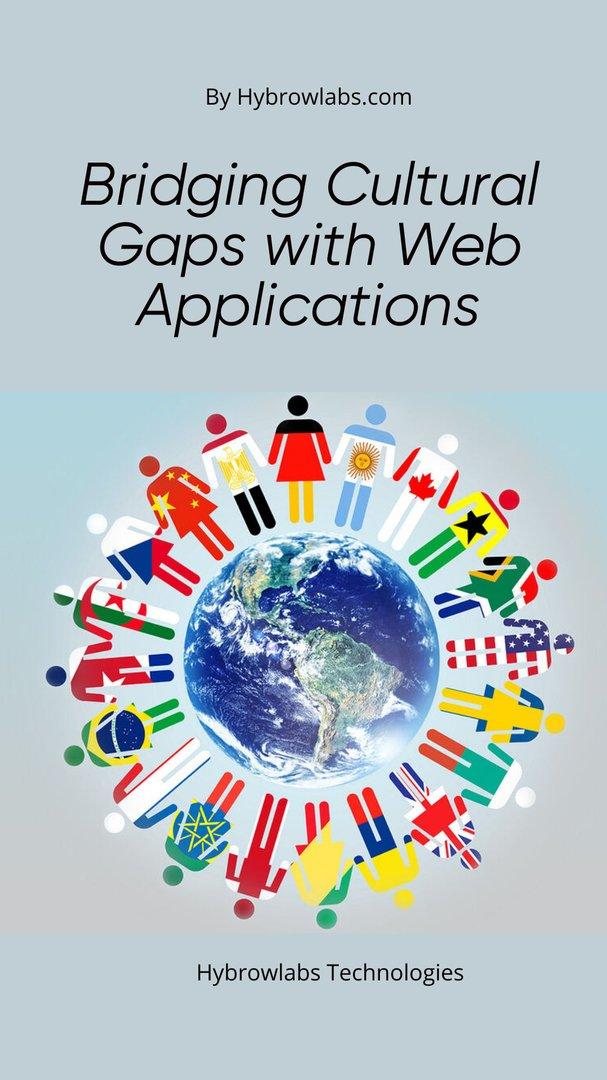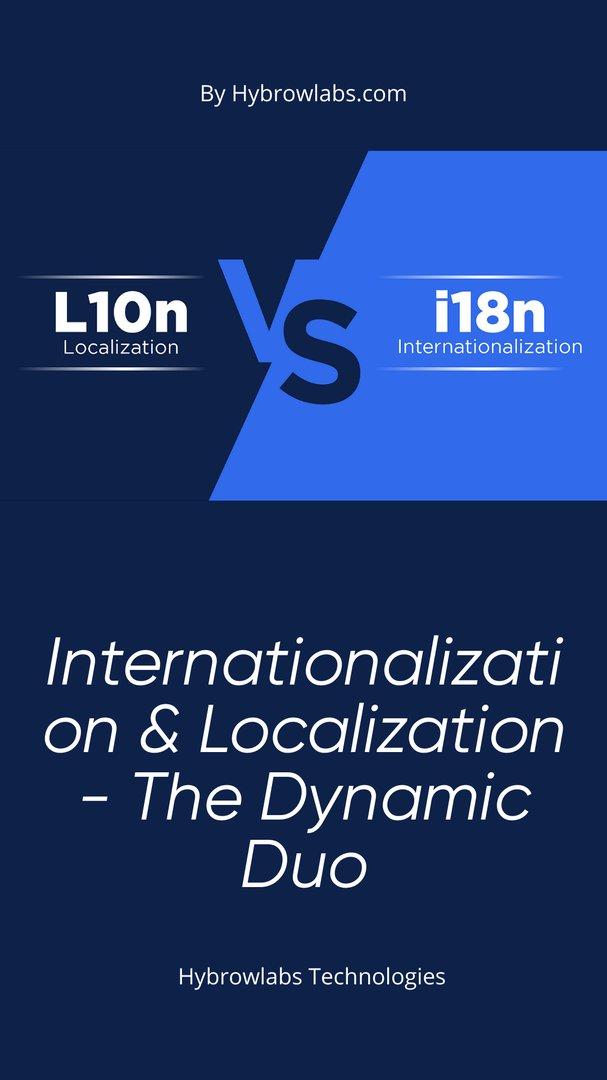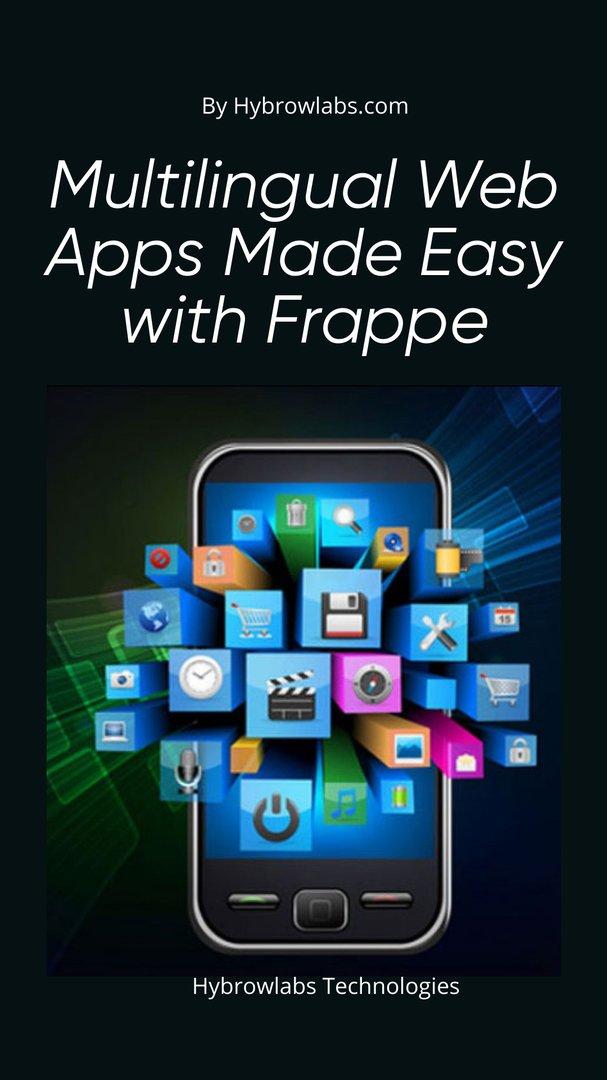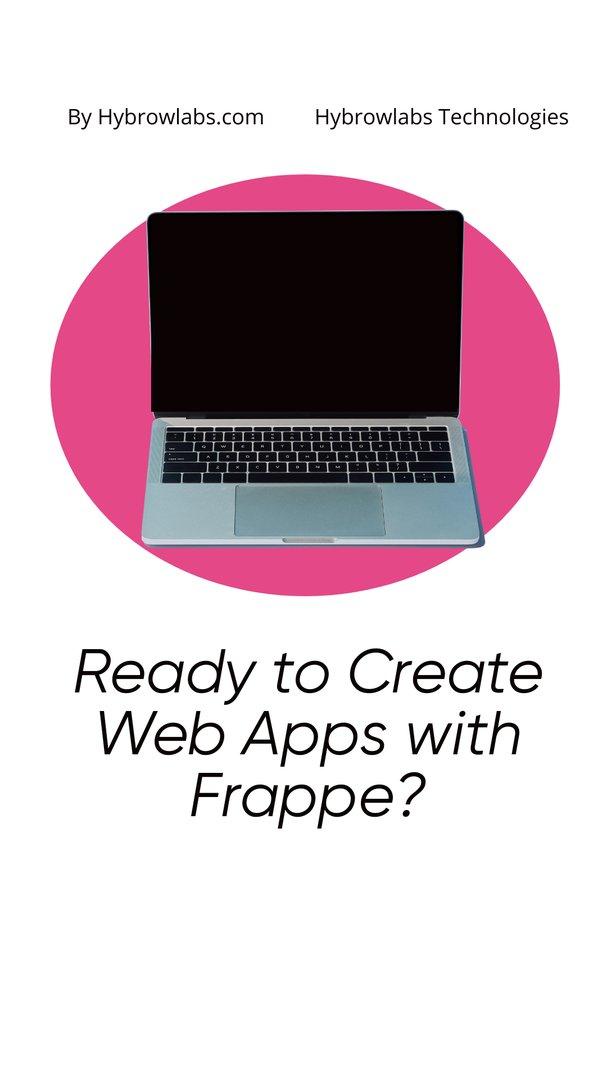Breaking Borders: How Frappe's Internationalization and Localization Support Can Help Your Web App Reach a Global Audience
Learn how Frappe's powerful localization and internationalization tools can help your web app break borders and connect with a global audience.
How Can Web Applications Bridge Cultural Gaps: Understanding the Importance of Internationalization and Localization:

Internationalization (i18n) is the process of designing and developing web applications in a way that can support multiple languages and cultural preferences. This involves creating a framework that allows for easy translation of user interface elements into different languages and adapting the application to work with different locales and time zones.
Localization (L10n) is adapting a web application to a specific language, culture, or region. This involves translating the application's content and user interface elements into the target language and adapting the application to conform to local cultural preferences, such as date and time formats, currency symbols, and measurement units.
Both internationalization and localization are important considerations for web applications that aim to serve a global audience. Internationalization provides a foundation for supporting multiple languages and cultural preferences, while localization involves adapting the application to meet the specific needs of a particular language or region. Together, they can help ensure that a web application is accessible and usable to users from diverse backgrounds and locations.
What Makes Frappe Framework a Game-Changer for Web Application Development?
A Python-based full-stack web application framework, Frappe Framework is free and open-source. With a modular approach, it is intended to make it simple to construct and customize sophisticated web applications. An integrated development environment (IDE) that is part of the Frappe Framework makes it simple to manage the data models, user interfaces, and business logic of the application while also streamlining the development process. Additionally, it has a wide range of integrated features like reporting tools, role-based access control, and email notifications. Model-View-Controller (MVC) architecture is used by the Frappe Framework, which is built on top of the Flask web framework and is simple to modify and maintain.
How Frappe Framework Simplifies Internationalization and Localization for Web Applications?
It is simple for developers to create online applications that can be utilized by a global audience thanks to the built-in support for internationalization and localization provided by the Frappe Framework.
(i) Internationalization:
- Frappe Framework supports internationalization by enabling programmers to translate user interface elements like menus, labels, and messages into different languages.
- The framework offers a straightforward translation function that can be used to create translated strings. Based on the user's preferred language, the framework automatically detects and loads the right translation.
(ii) Localization:
- By enabling developers to alter many features of the application to suit regional cultural preferences, Frappe Framework allows localization.
- This covers time and date forms, monetary signs, and unit of measurement.
- Moreover, the framework has built-in assistance for localizing user interfaces and content, making it simple to modify the application to suit the requirements of particular languages or areas.
Overall, developers may create web apps that can be utilized by a variety of international users while maintaining a seamless and localised user experience thanks to the support for internationalization and localization provided by the Frappe Framework.
What are the key advantages of using Frappe for global web app development?
For the creation of worldwide online applications, Frappe Framework offers a number of advantages, including:
- Built-in support for internationalization and localization: Frappe Framework makes it simple to develop online apps that can be utilized by a global audience thanks to its built-in support for internationalization and localization. Because of the application's built-in support for internationalization and localization, developers may quickly translate the application's user interface and content into different languages and alter certain features to accommodate different cultural norms.
- Fast development: The integrated development environment (IDE) provided by the Frappe Framework makes it simple to manage the data models, user interfaces, and business logic of applications. As a result, the development process is sped up and developers are free to concentrate on creating the application's essential features.
- Customizable: Frappe Framework's modular and extensible design makes it possible for developers to adapt the application to their particular requirements. This implies that whenever new features and functionality are required, developers can quickly add them to the application.
- Strong feature set: Role-based access control, email notifications, and reporting capabilities are just a few of the strong built-in features that the Frappe Framework has available. These characteristics make it simple for developers to create robust and scalable web apps.
- Python-based: The Frappe Framework was created using the popular programming language Python, which has a sizable developer community. Because of this, it is simple to locate materials and support for the framework and to combine it with other Python-based tools and technologies.
With built-in support for internationalization and localization, quick development capabilities, and a substantial feature set, Frappe Framework provides a strong and adaptable solution for developing worldwide web apps.
How Frappe handles Internationalization?

When creating online applications for a global audience, internationalization, or i18n, is a crucial factor to take into account. Frappe Framework has built-in i18n support, which makes it simple to develop multilingual web applications.
- For i18n support, Frappe makes use of the "gettext" translation package.
- Developers can indicate content that has to be translated using the "translate" method, and Frappe will create it.po files for each language the app supports.
- The indicated text can be translated using the .po files, which can be changed, and Frappe loads the correct translation based on the user's preferred language.
How developers can use Frappe to create multilingual web apps?
- The "translate" technique allows developers to indicate content that has to be translated and create translation files for each language the app supports.
- The built-in support for locale-specific date and time formats, currency symbols, and measurement units in Frappe allows developers to adapt the application for each language or region.
- Developers can limit access to specific features depending on language or location by using Frappe's role-based access control.
How can Frappe streamline the internationalization process in web application development?
With integrated i18n support, Frappe makes it simple to develop multilingual web applications.
- The integrated development environment (IDE) for Frappe makes it simple to handle translations and locale-specific settings while streamlining the development process.
- The modular architecture of Frappe makes it simple to adapt the app for each language or geographical area.
- The built-in capabilities of Frappe, such as role-based access control, make it simple to add limitations and permissions that are exclusive to a language.
- The gettext library is used by Frappe to guarantee correct and consistent translations.
How Frappe supports Localization?
The process of creating online applications that are appropriate for many locations and cultures is known as localization or l10n. The built-in l10n support provided by the Frappe Framework makes it simple for developers to localize their web applications for certain markets.
- Developers can quickly alter locale-specific parameters including date and time formats, currency symbols, and measurement units using Frappe.
- Frappe offers language-specific translations, making it simple to localize the app's content and user interface.
- The modular nature of Frappe makes it simple to add customizations for different languages or geographical areas.
How developers can use Frappe to adapt their web apps to local cultures and markets?
- The built-in support for locale-specific settings in Frappe allows developers to make sure that the app displays date and time formats, currency symbols, and measurement units that are acceptable for each locale.
- Users will find it simpler to comprehend and utilize an app if developers translate the user interface and content into their native language.
- Developers can alter how the app behaves depending on the user's location or preferred language. For example, different features or materials may be displayed depending on the user's geography.
How can Frappe simplify and improve the localization process in web application development?
- By offering integrated l10n support, Frappe makes the process of localizing web applications for certain markets simpler.
- Because of its modular architecture, Frappe makes it simple to add changes that are particular to each country or language.
- By using translations tailored to each language, Frappe makes sure that the app's user interface and content are accurate and appropriate for every region.
- It is simple to customize Frappe to meet regional norms and customs because it supports locale-specific options.
- The integrated development environment (IDE) for Frappe makes l10n customizations and translations simple to manage.
What are the most effective strategies for developing a global web application with Frappe?

What are some practical tips and techniques for developers to utilize Frappe effectively in the development of a global web application?
Here are some pointers for programmers on how to utilize Frappe for global web app development:
- From the outset of the project, consider localization and internationalization. Think about the geographies, cultures, and languages that the app will need to support.
- Employ Frappe's integrated i18n and l10n support to streamline the development process. Time will be saved, and the software will be accurate and consistent across all languages and countries as a result.
- Make modifications that are language- or region-specific by utilizing the modular design of Frappe. This will make it simple for you to modify the app to comply with regional traditions and norms.
- By using role-based access control in Frappe, you can limit access to specific features based on a user's locale or language. This can help guarantee that the software complies with regional rules and specifications.
- Use the integrated development environment (IDE) of Frappe to control translations and localizations (l10n). This will save time and guarantee precise and consistent translations.
In what ways can Frappe assist developers in avoiding common mistakes and pitfalls that may arise during web application development?
By offering built-in i18n and l10n support, Frappe can aid developers in avoiding frequent difficulties in the construction of international web apps. Frappe makes it simple to control localizations and settings, which can assist in guaranteeing that the app is correct and consistent across all languages and locations. The modular architecture of Frappe makes it simple to develop adaptations unique to each language or location, which can assist guarantee that the app complies with regional norms and practices. Finally, Frappe's role-based access control can aid in making sure the app complies with regional laws and specifications.
How can Frappe contribute to significant time and cost savings for developers involved in web application development?
By streamlining the development process and lowering the requirement for bespoke development, using Frappe for the development of global web apps can help developers save time and money. Frappe's modular architecture, role-based access control, and built-in support for i18n and l10n may all be used to enable developers to construct web apps that are precise, consistent, and compatible with regional laws and requirements. Instead of investing their time and resources in custom development, developers can concentrate on creating excellent apps by adopting Frappe.
Conclusion:

In conclusion, Frappe is a fantastic framework for localizing and translating web applications. Developers may quickly make apps that support many languages and geographical areas thanks to its built-in support for i18n and l10n. Frappe's modular architecture also makes it simple to create customizations for various languages or geographical areas, enabling developers to modify their apps to fit with regional norms and practices. Role-based access control offered by Frappe can also aid in ensuring that apps adhere to regional laws and specifications.
In today's connected world, developing international web applications is becoming more and more crucial. Developers can grow their user base and their app's reach by creating apps that are usable and accessible to users in various languages and areas. Services like Hybrowlabs Development Service can provide valuable expertise in implementing Frappe for multilingual and localized applications.
We urge programmers to use Frappe for their upcoming web applications. Together with its modular architecture and integrated development environment, its complete support for i18n and l10n can make it simple for developers to produce high-quality, universally accessible programs.
FAQ’s
1. How does Frappe enable localization and internationalization?
Frappe's translation architecture includes built-in support for i18n and l10n. This framework allows developers to define strings in their code that can be translated and then give translations for those strings in various languages. The handling of date and time formats, currency symbols, and other locale-specific parameters are all supported by Frappe.
2. Can multilingual websites be built with Frappe?
A: Absolutely, websites that support many languages can be created with Frappe. Developers may handle languages like Arabic and Hebrew using the right-to-left support of Frappe and the translation framework to give translations for all of the text on their website.
3. What languages is Frappe compatible with?
A: More than 40 languages, such as English, Spanish, French, German, Japanese, Chinese, Arabic, and many more, are supported by Frappe. By creating translation files for their program, developers can add more languages.
4. How do dates and numbers get formatted in Frappe?
A: To handle date and number formatting, Frappe uses the Common Locale Data Repository (CLDR). This enables developers to specify the format that should be used for each locale, including the sequence of the day, month, and year and the symbols for decimal separators and thousands.
No comments yet. Login to start a new discussion Start a new discussion